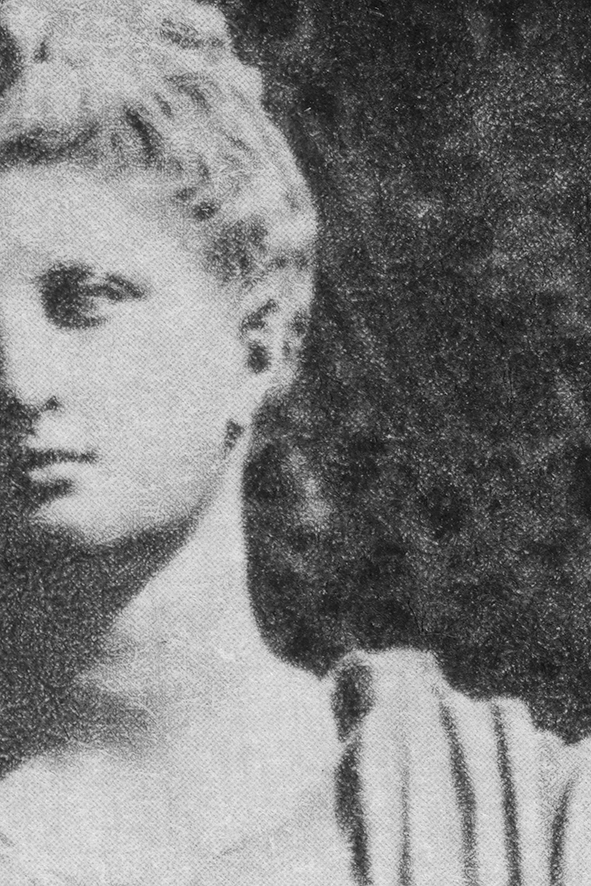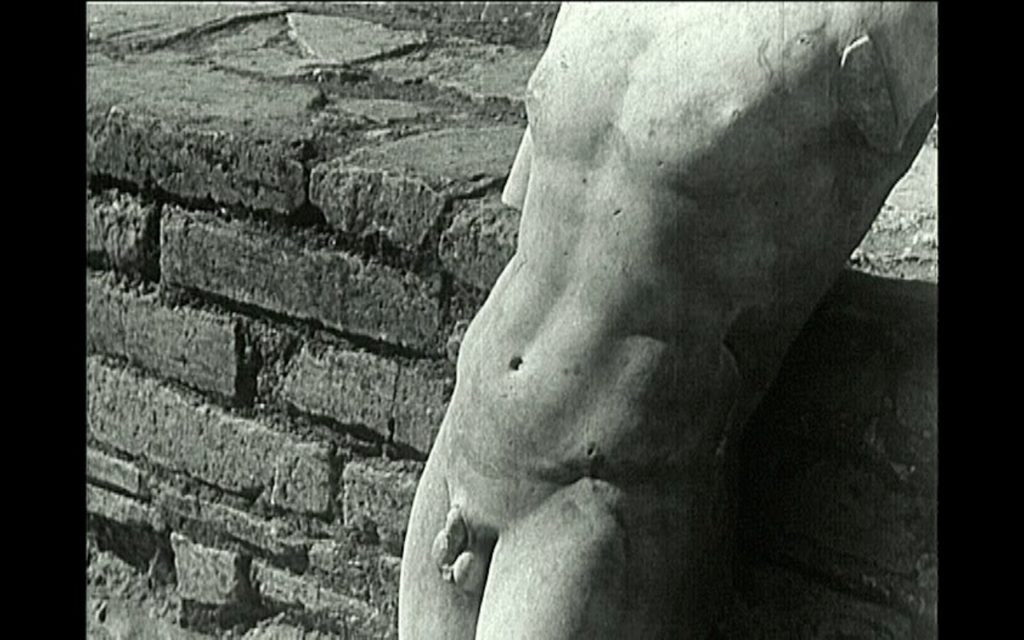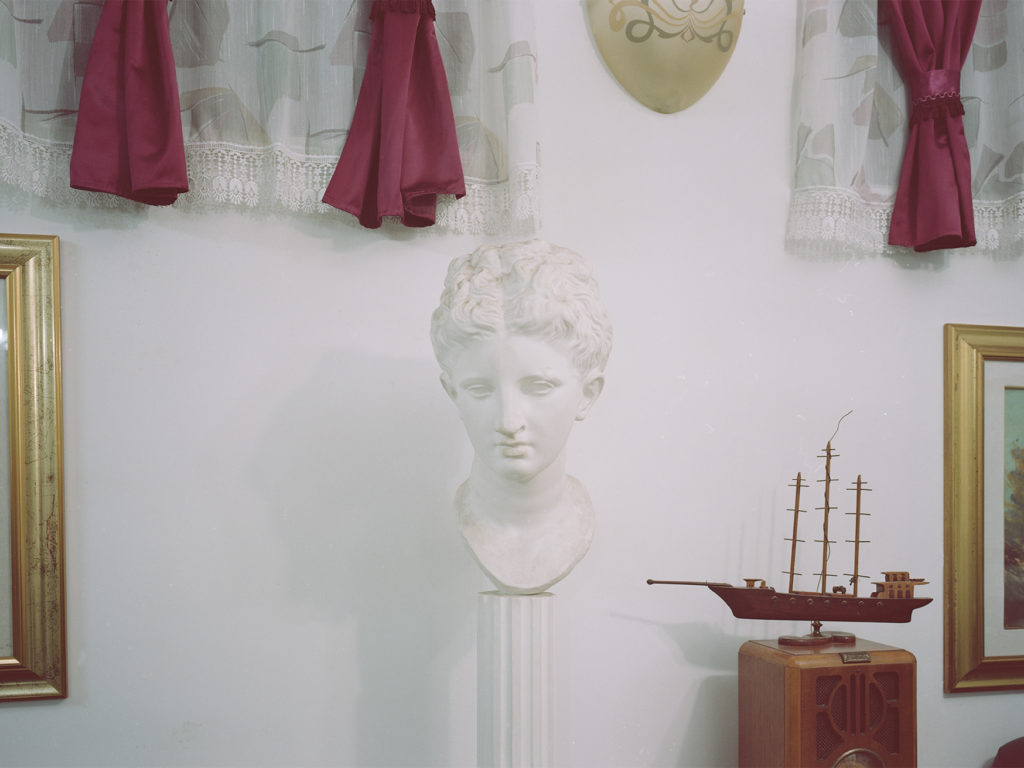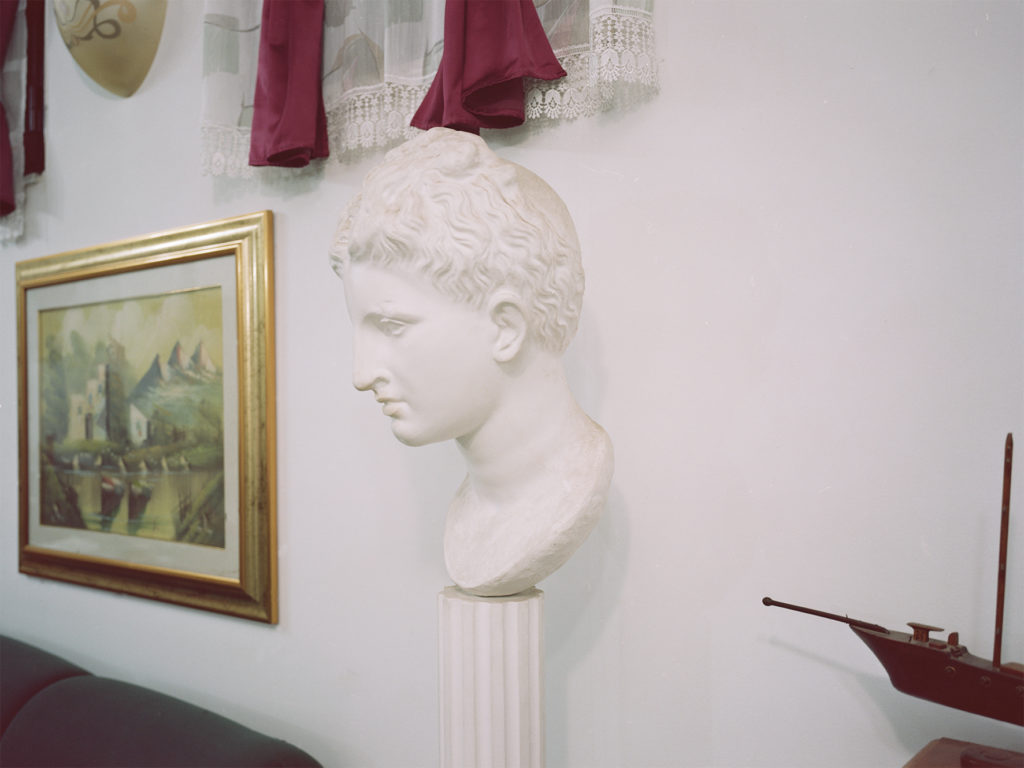
La déesse de Butrint (actuellement) is composed of three ink-jet prints and a text.
The three images has been realized scanning a photograph which I found into an old communist publication with the caption La déesse de Butrint (actuellement). This photograph, taken by L. M. Ugolini (the fascist archeologist who discovered the statue), is one of the first photos of The goddess of Butrint, one of the few photographs showing this sculpture as a complete statue: the head was found detached from the body, and today is exhibited as a bust. As we can read on Ugolini’s notes, it was almost impossible to understand if the face belongs to the body and if it represent a female or a male subject. Today archaeologists agree that it portrays Apollo, but people keep referring to the statue as a goddess.
The text tell about my discovery of the photo and it’s story.



On November 13, 2015, I bought three books from an antique dealer in Rruga George W. Bush in Tirana. These illustrated books about the Albanian landscape were published during Enver Hoxha’s communist regime. Two of them are in Russian, and one in French. In the last pages of L’Albanie Pittoresque, there is a black and white photograph depicting a full-length statue in a garden. The caption reads “La déesse de Butrint (actuellement en Italie)”.After some researches, I found the same picture in the Bollettino d’Arte from December 1928 (Year 8, ser. 1, n. 6). The article is titled La Dea di Butrinto and signed by Luigi Maria Ugolini, who is also the author of the photographs accompanying the text. Luigi Maria Ugolini was in charge of the fascist archaeological expedition to Butrint, the decision to excavate in this area was taken in 1927. When the excavations began, in 1928, some statues were found in the area next to the amphitheater. Two of these, a head and a body, found laying a couple of meters apart, seemed to belong to the same figure of a woman. The article contains a precise description of the statues and many images of the Goddess, taken in front, from behind, and all around. Ugolini writes that he is starting to doubt that the head belongs to the body. The statue as a whole communicated a certain disharmony. The more he looked at it, its facial features became more masculine, it reminded him of Apollo. So I tried this head on the other four statues we found there, to see if they matched: but in vain. The last pictures in the bulletin show the head alone, separated from the body. Head and body were then separated: they had two different fates, and the stories are discordant. While the body was brought to Tirana, the head became a diplomatic present from King Zog to Mussolini, but this is only the official version. Already at that time, rumors said that the gift was a lie that covered Ugolini’s attempt to steal the head and bring it to Italy. The nationalist propaganda during Hoxha’s regime advertised it as a theft, but no proof was ever found. We only know that in 1930 the head is in Italy. In 1940 it was shortly reunited with its body in Naples, to be exposed in the Albanian pavilion, during the Overseas Exposition. The outbreak of World War II hinders the return of the body in Albania, as agreed. The body went probably destroyed when the Allies bombed Naples in 1943, while the head was preserved. In 1982, the head finally returned to Albania during obscure diplomatic negotiations. Apollo’s head, better known as the Goddess of Butrint, is now in the National Museum of History of Tirana and became one of the symbols of Albania. If you look at it from the front you see a girl’s face; but if you turn to its left, a masculine profile will suddenly appear. Italian version
Translated by Dennis Logan Carrara




A goddess in my Hostel #3 (diptych) ink-jet print, cm 60 x 80